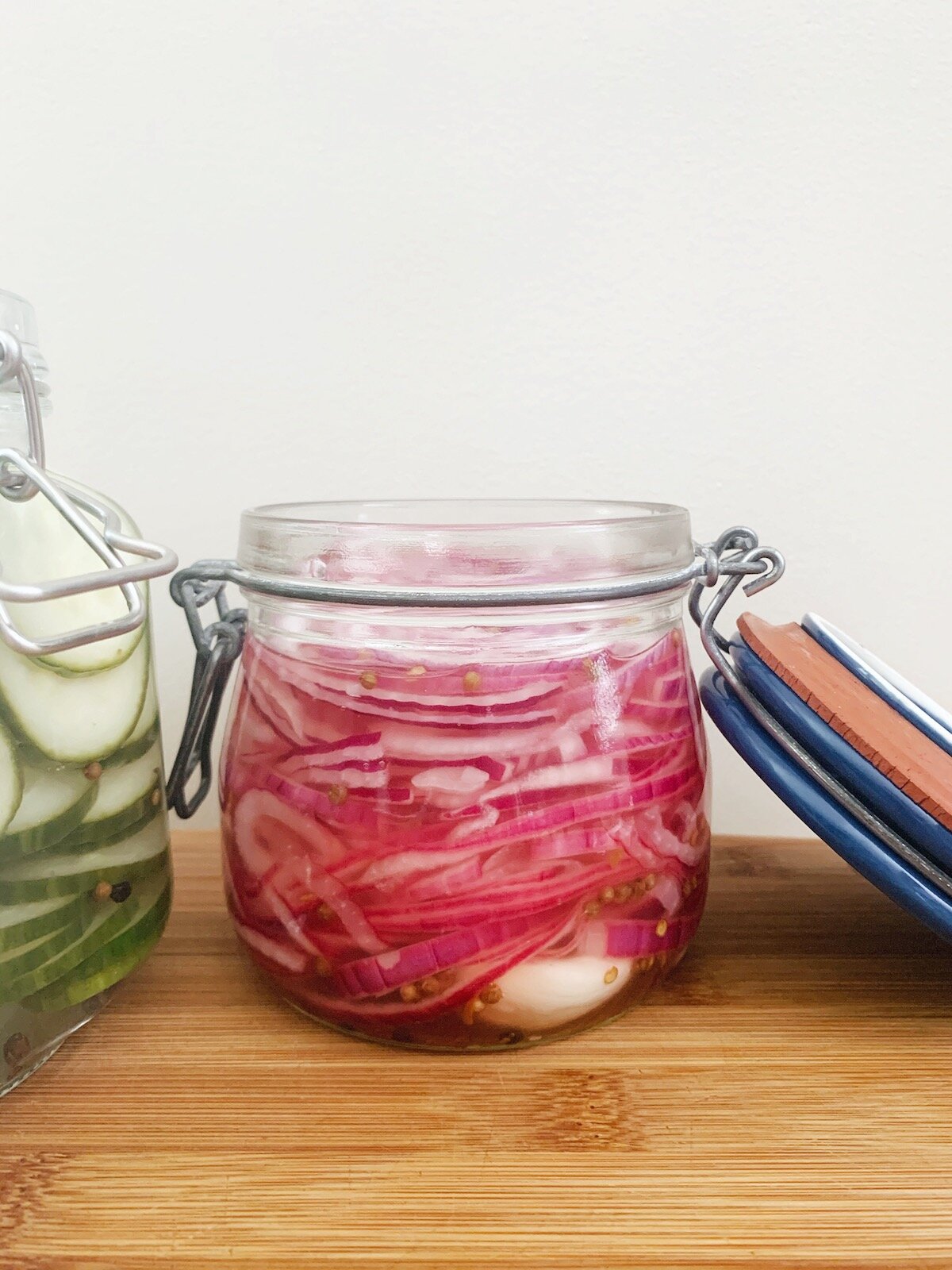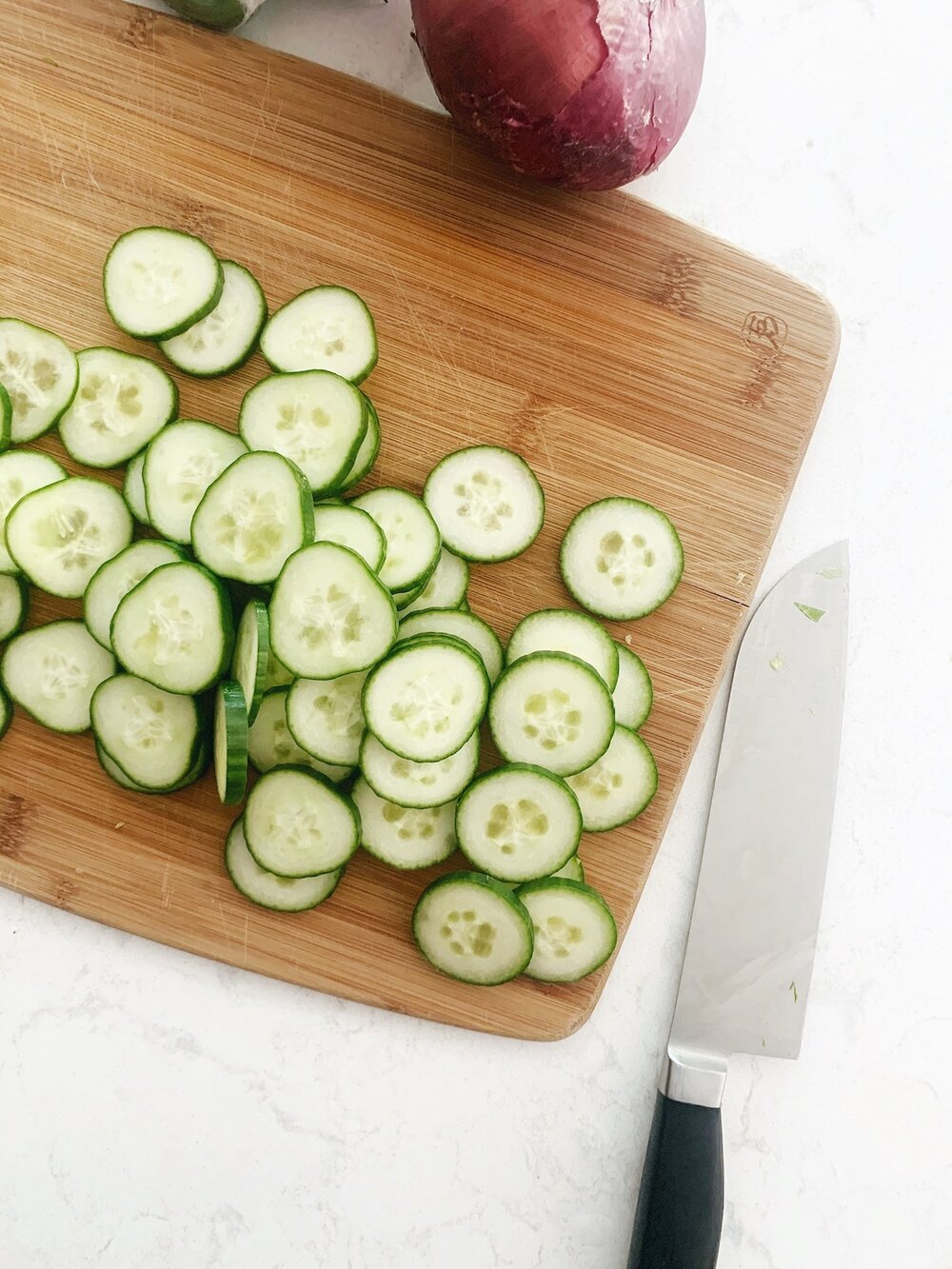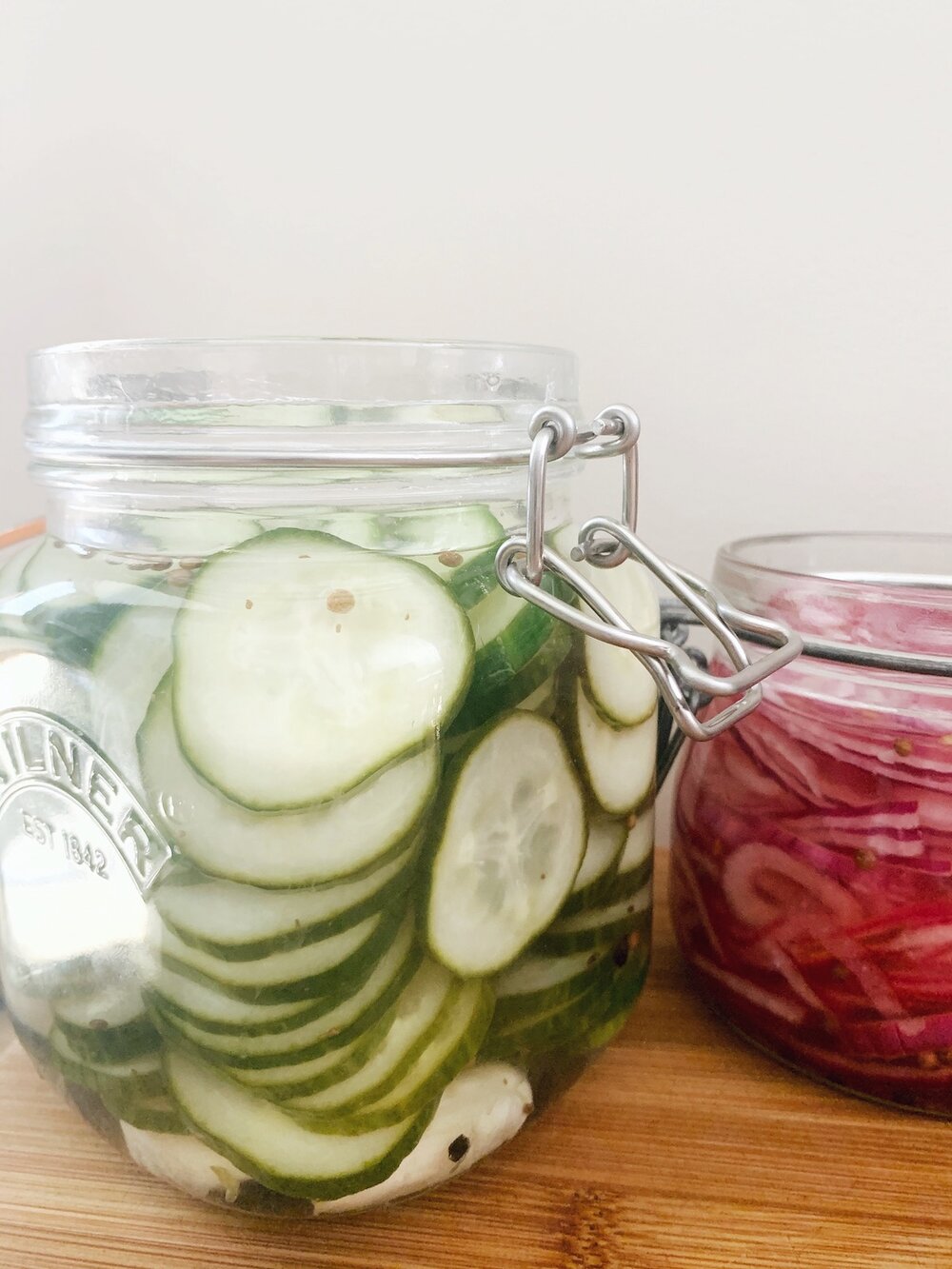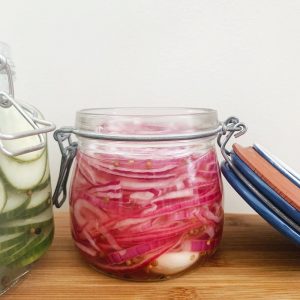How to Make Quick Pickled Vegetables
Making quick-pickled vegetables is so easy once you learn the simple formula for making the brine, which you can customize each time you make a new batch.

Whether you want to make pickled vegetables for snacking or you want to add a tangy crunch to salads, wraps, bowls, or add a pop of color, freshness, and crunch to a charcuterie board, then you’ll want to keep reading.
Quick pickled vegetables are easy to make, inexpensive, and have such great flavor, that you’ll never go back to buying store-bought varieties.
What Are Quick Pickled Vegetables?
Quick pickled vegetables, also called refrigerator pickles are vegetables that are pickled in a brine solution made of vinegar, water, salt, and sugar and stored in the fridge.
They’re a great alternative to fermented pickles because they can be ready in as little as 24 hours (as opposed to the 4-7 days it takes to make fermented pickles).
The longer you let them bathe, the more developed their flavors will be, so while you can technically eat them after 24 hours, their flavor is even better the longer you wait.
If you’re feeling impatient like I sometimes am, crack those babies open after 24 hours. They’ll still have great flavor, promise!

What Type of Vegetables Can You Pickle?
There are many vegetables that work well for pickling such as red onions, carrots, cucumbers, radishes, green beans, garlic scapes, fennel, shallots, bell peppers, and so on.
Leafy greens are the only vegetable that won’t work for pickling because they’re too delicate. All other vegetables are fair game though.
The biggest piece of advice? Make sure to use fresh vegetables.
If using cucumbers, I recommend using pickling cucumbers or Persian or English varieties since they tend to be a little sweeter, crunchier, and less bitter than others.
You can also pickle fruit such as watermelon, cherries, tomatoes, etc.

Common Seasonings for Pickling
You can use any combination of these seasonings or you can experiment with others. It’s all about preference, really.
Here are some ideas for seasonings that are typically found in pickled vegetables
- Fresh herbs: the herbs with woody stems do best here (rosemary, thyme, oregano or dill)
- Aromatics: fresh garlic cloves – smashed or sliced, fresh ginger – peeled and sliced thin
- Seasonings: black peppercorns, red pepper flakes, sesame seeds
- Whole spices: coriander seed, celery seed, mustard seed, caraway seed, cumin seed
- Ground spices: smoked paprika or turmeric
Vinegars That Are Great for Pickling
- Rice vinegar/Rice wine vinegar (same thing)
- White wine vinegar
- Champagne vinegar
- White distilled vinegar
- Apple cider vinegar (it’ll make the brine slightly darker in color though)
Basically, you can use any vinegar that is white. Either use them alone or in combination with other vinegar, but you’ll want to stay away from using dark varieties such as balsamic, malt, or red wine vinegar.

More Healthy How-To Posts
If you enjoyed learning how to make quick pickled vegetables, be sure to check out:
How to Make Quick Pickled Vegetables (+ a recipe)

Ingredients
- 4 cups vegetables of choice sliced
- 1 cup vinegar from the list above
- 1 cup water
- 1 tablespoon sea salt
- 1 tablespoon sweetener
- 2 garlic cloves smashed (optional)
- 1 tablespoon additional seasonings
Instructions
- Add the smashed garlic (if using – smash with the palm of your hand or a knife), and additional seasonings of your choice to the bottom of a clean jar and add the sliced vegetables on top. Set aside.
- In a medium saucepan, bring the vinegar, water, sea salt, and sweetener to a boil until the salt and sweetener are dissolved.
- Pour the brine over the top of your vegetables and let it come to room temperature before topping with a lid and putting in the fridge.
- Wait at least 24 hours before enjoying, and store in the fridge for up to 2 months.

